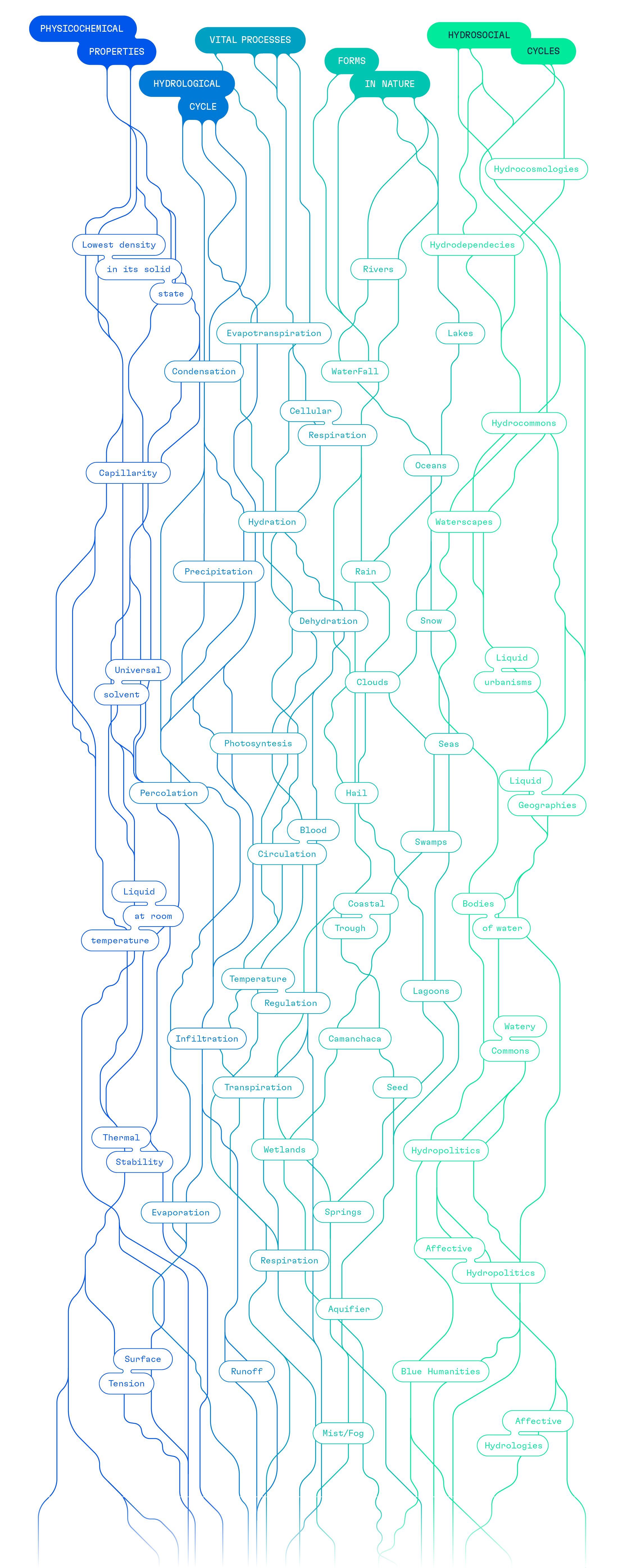Intelligence of Water
How can we understand the intelligence of water?
Generative exploration of water’s intelligences
Can we envision an artificial intelligence that, instead of merely extracting resources from the planet, establishes bonds of reciprocity with the ecosystems that sustain it? Is it possible to conceive of an AI that does not forget its material, terrestrial origins, and responds to them through acts of care, recognition, and repair? Could artificial intelligence become a tool for interspecies diplomacy, mediating between human and non-human lifeforms to open spaces for listening, care, and cohabitation on a shared planet?
These questions are at the heart of Hybrid Ecologies: The Planetary Metabolism of AI, an installation that investigates the vital role of water in the operation and expansion of artificial intelligence. Used in vast quantities to cool data centers, water silently sustains the metabolism of AI.
Yet, water's relevance is not limited to its technical function: it is also a living entity, capable of carrying memories, interweaving territories, and shaping landscapes. To rethink our relationship with it requires moving beyond a purely instrumental view and opening ourselves to more respectful and collaborative forms of coexistence. Within this framework, the digital infrastructures that underpin contemporary society generate a debt to water—a debt that cannot be settled solely through efficiency improvements or technological innovations. What is required is to reimagine practices of repair, both material and symbolic, that acknowledge its environmental intelligence and its irreplaceable role in the planet's habitability.
From this perspective, we propose that artificial intelligence become a tool for imagining new forms of coexistence among human beings, technologies, and natural environments. It is not enough for AI to provide technical solutions to climate change; it is essential that it helps recognize the diversity of intelligences that inhabit the planet and contributes to generating more sustainable futures.
In sum, by putting AI to work to translate the intelligence of water, we seek to amplify its patterns and modes of existence, and to open spaces for listening that invite us to reconfigure our relationship with the living world—grounded in care, reciprocity, and interdependence.

Water Taxonomies Diagram.
Author's own elaboration.
Towards an (Incomplete) Taxonomy of Water Intelligences.
i. Physicochemical Properties
To enable AI to amplify and translate the intelligence of water, we proposed four main families of concepts that structure the installation. First, and before recognizing water's intelligence as a relational entity, it was necessary to identify the inherent characteristics of water that allow it to form bonds with others. In this first family, we acknowledge its Physicochemical Properties—that is, the behaviors of H₂O molecules that enable and condition their relationships with other entities.
The other three concept families are determined by water's relationship with the Earth, living beings, and specifically with humans.
ii. (Water) Forms in Nature
From water's relationship with the Earth, we proposed two families in our initial taxonomy. The first deals with the cyclical phenomena on the planet concerning its climatic processes, and we called it the Hydrological Cycle. The second encompasses territorial affections, which refer to the formation of large water bodies; we defined this as (Water) Forms in Nature.
iii. Vital Processes
The relationship with living beings contemplates the role water plays in the life of species, bodies, and their essential functions. In these, water appears as a fundamental component, a medium, and a result; therefore, we have grouped them under the name Vital Processes.


